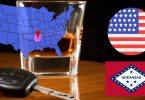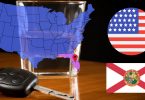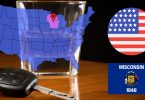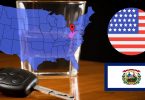The maximum allowable legal blood alcohol content (BAC) in New Mexico should not surpass 0.08%, which is equivalent to 80 milliliters of alcohol per 100 milliliters of blood. For individuals under the age of 21, any BAC level of 0.02% or higher is prohibited.
What is the Legal Alcohol Limit for Driving in New Mexico?
In New Mexico, the legal alcohol limit for driving varies depending on your age and whether you are operating a commercial vehicle. It’s essential to be aware of these limits to ensure you stay within the boundaries of the law and keep our roads safe. Here are the specific alcohol concentration limits for different driver categories:
- For Drivers 21 and Over: It is illegal to operate a vehicle with a breath or blood alcohol concentration (BAC) of .08 or more. This means that if you’re 21 years or older, your BAC should not exceed .08%.
- For Drivers Under 21: If you are under 21 years of age, the legal limit is significantly lower. You must not drive with a BAC of .02 or higher. New Mexico has strict regulations for young and inexperienced drivers to promote safe driving habits.
- For Commercial Vehicle Drivers: If you are driving a commercial vehicle, such as a truck or bus, you are subject to a lower legal limit. The BAC limit for commercial vehicle drivers in New Mexico is .04. It is crucial for commercial drivers to adhere to this stricter standard to maintain road safety.
Drink and Drive Penalties and Punishments in New Mexico
Driving while under the influence (DWI) in New Mexico is a serious offense, and the penalties for such actions are substantial. It’s crucial to understand the consequences of DWI convictions and the administrative revocation of your license. If you are found guilty of DWI in New Mexico, here are the potential penalties and punishments:
First DWI Conviction:
- Stiff fines and court costs
- Potential jail time
- Mandatory treatment
- Installation of an ignition interlock device on your vehicle
- Driver’s license revocation by the Motor Vehicle Division (MVD)
- This DWI conviction remains on your driving record for 55 years
Subsequent DWI Convictions:
- Increased fines and longer jail sentences
- Extended driver’s license revocation
- The severity of penalties escalates with each subsequent DWI conviction
Administrative License Revocation (Implied Consent):
- If you are arrested for DWI and your breath test registers at or above the legal limit, or if you refuse to take the test, your license will be confiscated on the spot by the police officer.
- The Motor Vehicle Division (MVD) will then impose an administrative revocation, which can last up to one year.
- Administrative revocation is separate from the court action for DWI.
Protesting Administrative Revocation:
- If you wish to protest the administrative revocation, you must request an administrative hearing within 10 days of your arrest.
- The hearing must be requested in writing and accompanied by a $25 hearing fee or a sworn statement of indigency.
- The hearing will occur within 90 days and will only cover specific issues, including the legality of the stop, the arrest, the timing of the hearing, the notification of potential license loss for test refusal, and the proper administration of the chemical test.
License Revocation Exceptions:
- The only exception to the one-year revocation is for first-time administrative revocation offenders who didn’t refuse the breath test.
Consequences of Driving While Revoked:
- Driving with a revoked license can lead to severe penalties, including jail time (mandatory seven days) and fines (mandatory $300).
- Your vehicle may be immobilized or “booted” for 30 days to prevent driving.
Revocation Periods:
- The revocation periods for Implied Consent (over and under 21 years of age) and criminal court DWI convictions are as follows:
- Implied Consent (Over 21 years):
- 1st Offense: 6 months for failing a chemical test, 1 year for refusing a chemical test
- 2nd or Subsequent Offense: 1 year for failing or refusing a chemical test
- Implied Consent (Under 21 years):
- 1st and Subsequent Offenses: 1 year for failing or refusing a chemical test
- Criminal Conviction of DWI in Court:
- 1st Offense: 1 year
- 2nd Offense: 2 years
- 3rd Offense: 3 years
- 4th or Subsequent Offense: Lifetime
- Arrest or Criminal Conviction for a DWI (Commercial Driver License):
- 1st Offense: 1 year disqualification
- 2nd Offense: Lifetime disqualification
- Implied Consent (Over 21 years):
It is essential to stay informed about New Mexico’s DWI laws and their consequences. For the most up-to-date information, please consult the official state’s website and seek legal advice when necessary. Your safety and the safety of others on the road are of utmost importance.
How to Calculate Your Alcohol Blood Limit in New Mexico
When it comes to determining if your alcohol blood limit is legal in New Mexico, law enforcement uses specific methods to identify whether a driver is over the legal Blood Alcohol Concentration (BAC) limit. In New Mexico, as in the rest of the United States, the legal limit for drivers over 21 is a BAC of 0.08%. For commercial drivers, the limit is lower, at 0.04%, and for drivers under 21, it is 0.02%, reflecting zero tolerance policies for underage drinking and driving.
How Police Identify BAC Levels in New Mexico
Police in New Mexico typically use two primary methods to determine a driver’s BAC:
- Breathalyzer Test: This is the most common roadside test used by police to estimate a driver’s BAC. The device analyzes a breath sample and gives a readout of the BAC. In New Mexico, refusal to submit to a breathalyzer test can lead to automatic suspension of a driver’s license, under implied consent laws.
- Blood Test: In cases where a breathalyzer test is not possible, or if the results are disputed, law enforcement may require a blood test. This is considered the most accurate method of measuring BAC, but it requires professional medical personnel to draw blood in a controlled environment, typically at a hospital or police station.
As an expert with 10 years of experience in phlebotomy, you recommend two ways for individuals to check their BAC level to ensure they are within legal limits before driving:
- Use a High-Quality Alcohol Breathalyzer: Specifically, the BACtrack S80 is recommended due to its professional-grade accuracy and endorsements (DOT & NHTSA Approved | FDA 510(k) Cleared). Keeping a device like the BACtrack S80 in your vehicle can provide a convenient and reliable estimate of your BAC, helping you make informed decisions about your ability to drive safely.
- Use a BAC Calculator: Created in collaboration with other phlebologists and web developers, a BAC calculator can offer an estimate of your BAC based on inputs like the quantity of alcohol consumed, the type of alcohol, your weight, and the time elapsed since drinking. While this method provides an estimate, it can be a useful tool for understanding how different factors affect your BAC.
It’s important to remember that while both methods can offer valuable insights into your BAC level, they do not guarantee 100% accuracy. Factors such as calibration of the device, individual metabolism rates, and the specific circumstances under which alcohol was consumed can all influence the results. Thus, when in doubt, the safest choice is to not drive if you’ve been drinking. These tools are meant to provide guidance and help prevent drunk driving by giving you a better understanding of how alcohol affects your BAC and, by extension, your ability to drive legally and safely.
Ways to avoid driving with a high BAC in New Mexico
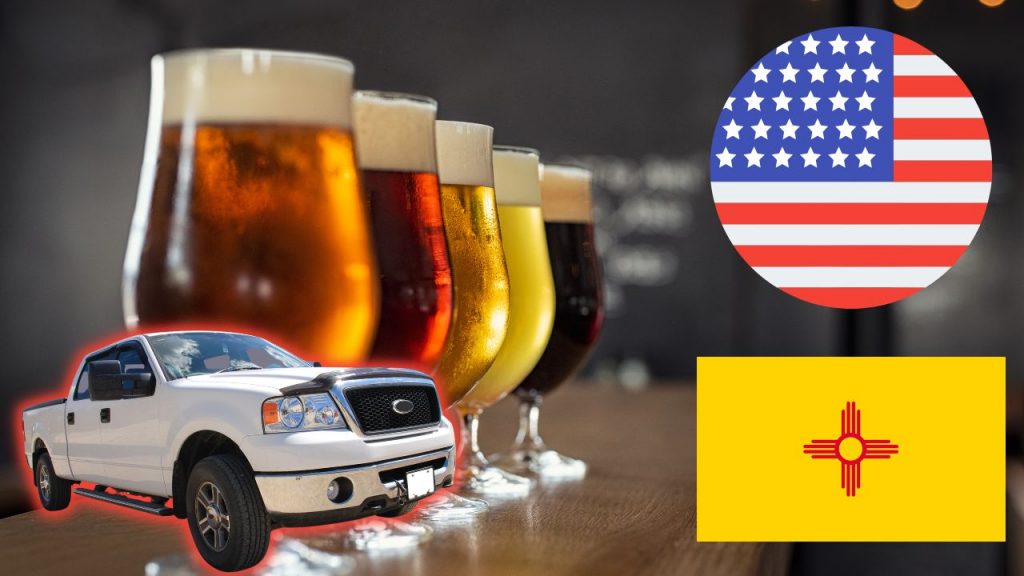
To avoid driving with a high BAC (Blood Alcohol Concentration) in New Mexico, there are several responsible alternatives to ensure you and others on the road stay safe. Here are two practical recommendations:
1. Use Ride-Sharing Apps or Local Taxi Services
One of the most convenient and immediate ways to avoid driving under the influence is to use a ride-sharing app such as Uber or Lyft. These apps offer easy access to reliable transportation at any time of day or night, directly from your smartphone. For those who prefer traditional taxi services, local companies provide valuable services tailored to the community’s needs. In Albuquerque, ABQ Taxi Service offers dependable taxi rides throughout the city. In Las Cruces, At My Door Shuttle is another excellent choice for getting home safely without the need to drive yourself. These options ensure that you can enjoy your evening out without risking driving over the legal alcohol limit.
2. Order a Designated Driver Service
If you find yourself in a situation where you’ve driven to a location but have consumed too much alcohol to safely drive back, consider using a designated driver service. These services send a driver to drive you and your car home. In Albuquerque, Designated Drivers On Demand provides a solution for those who need to get both themselves and their vehicle home safely. In Las Cruces, L & M Limousine LLC offers similar services, ensuring that you don’t have to leave your car behind or risk driving it while impaired. Searching for “designated driver service” along with your city name on Google can help you find local providers offering these invaluable services.
By planning ahead and choosing one of these safe transportation alternatives, you significantly reduce the risk of DUI-related incidents. Both ride-sharing apps and designated driver services are designed to provide convenience and safety, allowing you to enjoy your time out without compromising on safety. Remember, the goal is always to make responsible choices that protect not only your well-being but also that of other road users and pedestrians.
Sticking to DWI Laws in New Mexico: Sad Statistics
In 2020, the New Mexico Department of Transportation reported 365 fatal crashes, with 36% involving alcohol impairment. New Mexico enforces strict DUI and DWI laws to curb drunk driving. Before driving, it’s prudent to check your BAC with an alcohol breathalyzer, ensuring it’s below New Mexico’s legal limit.
To avoid the risks of DUI, consider alternatives like cabs, Uber, or designated driver services. Stay informed on DUI laws by visiting New Mexico’s Motor Vehicle Department’s website. Misconceptions about alcohol’s impact on driving persist; it’s crucial to understand the dangers and avoid driving after drinking. Even moderate alcohol intake can impair your driving ability, so opt for public transportation if in doubt.
Regularly monitoring your BAC can help maintain safety on the road, and keeping updated with New Mexico‘s DUI regulations is advisable for all drivers.


